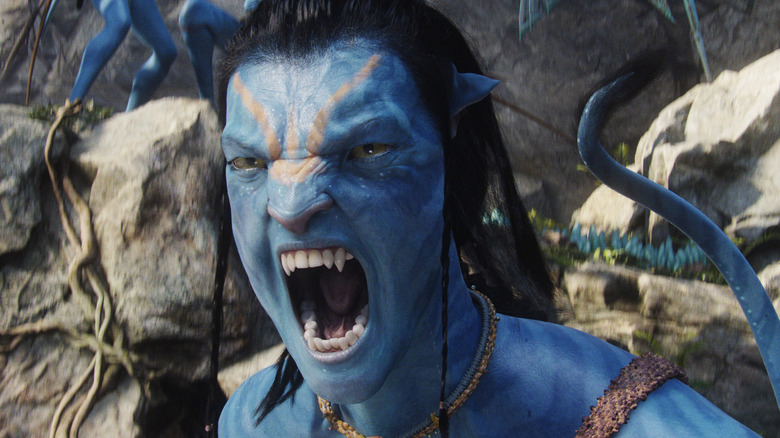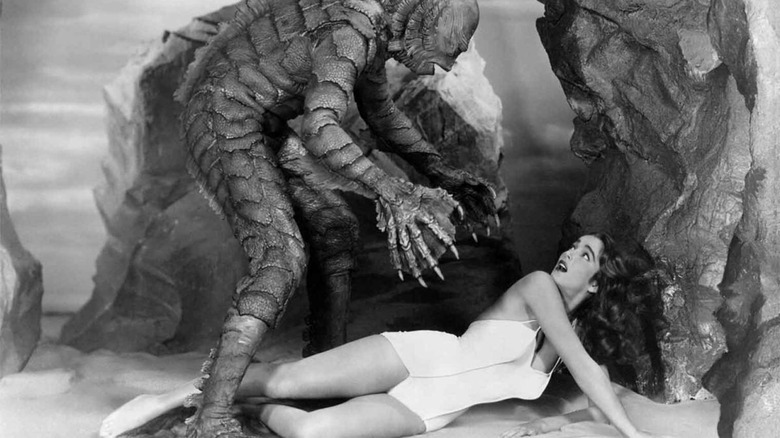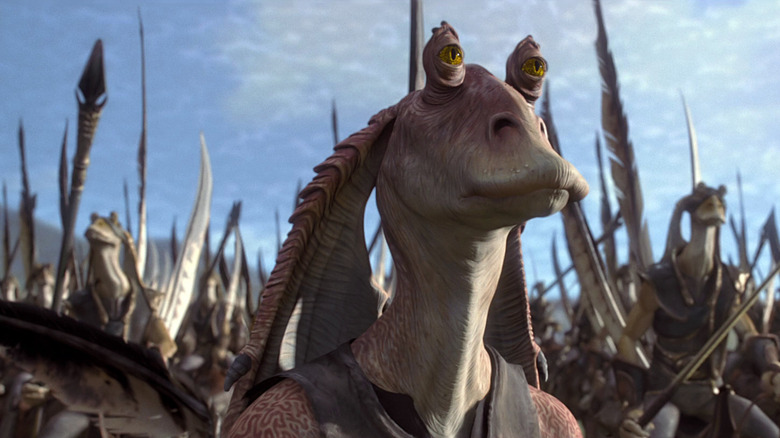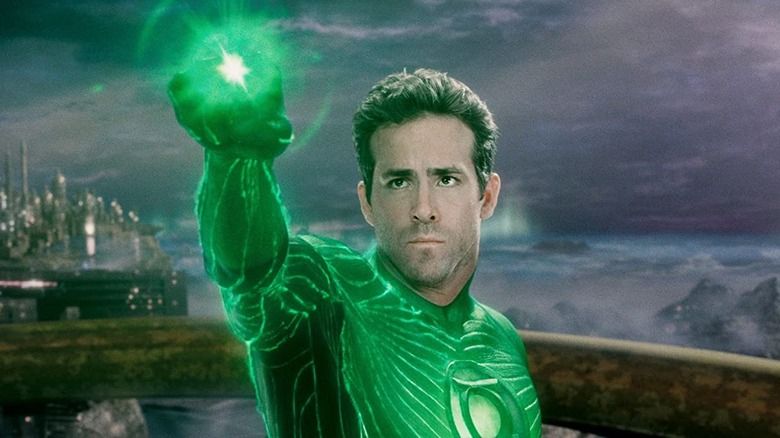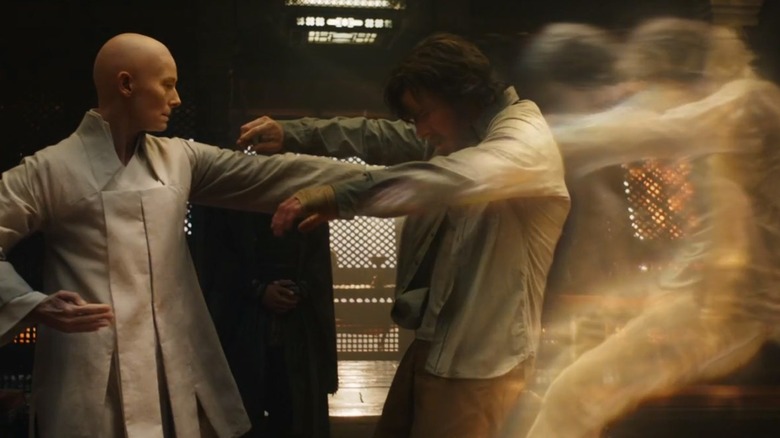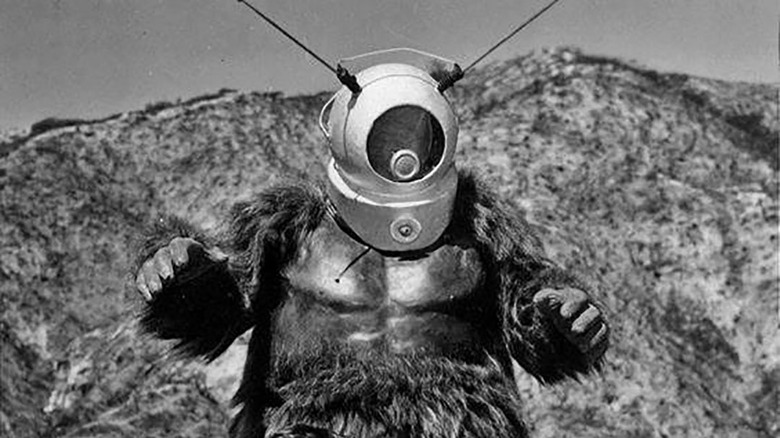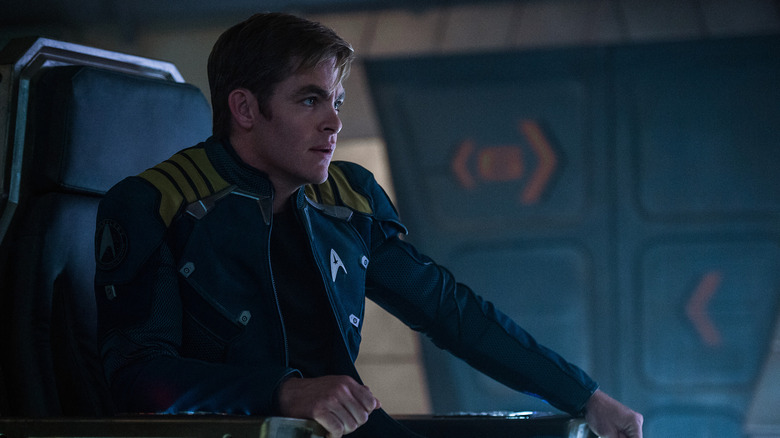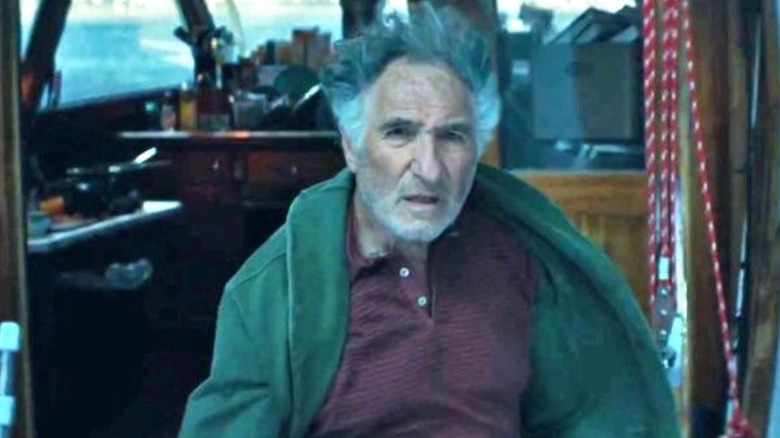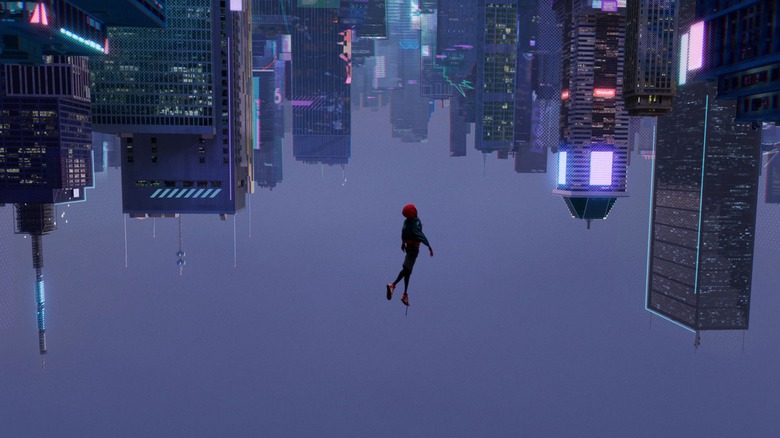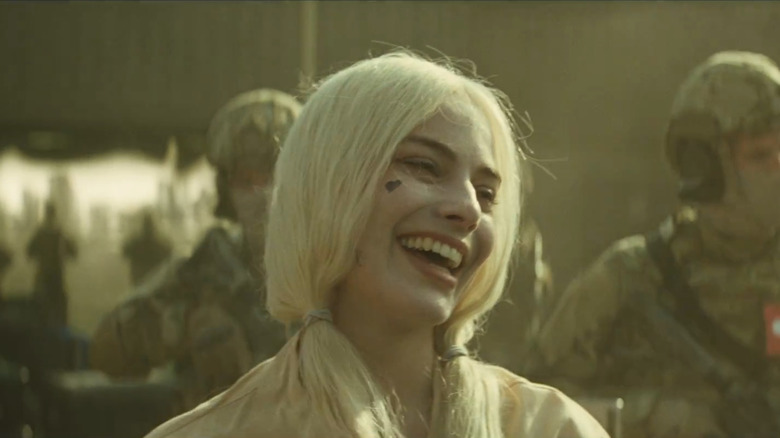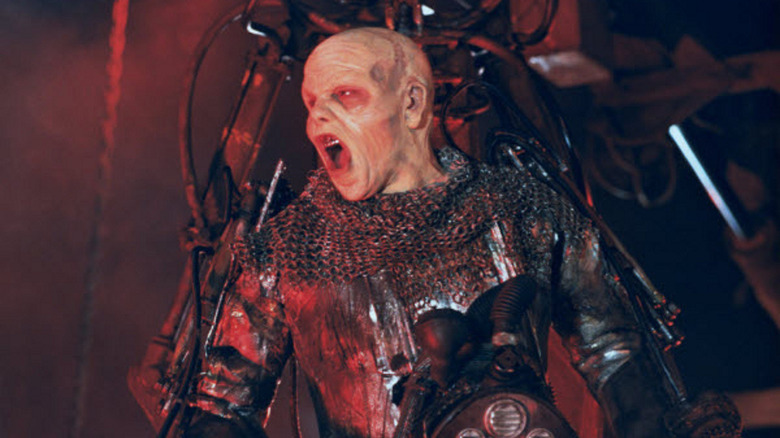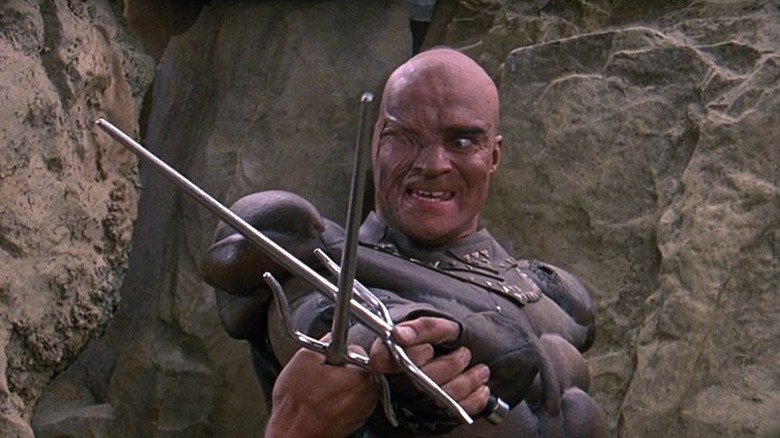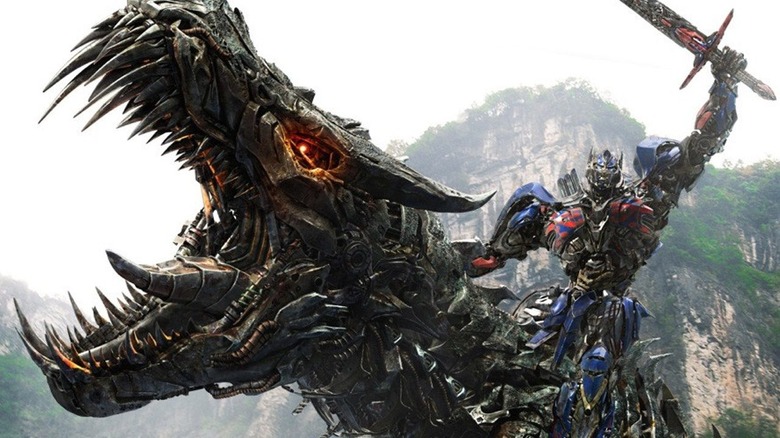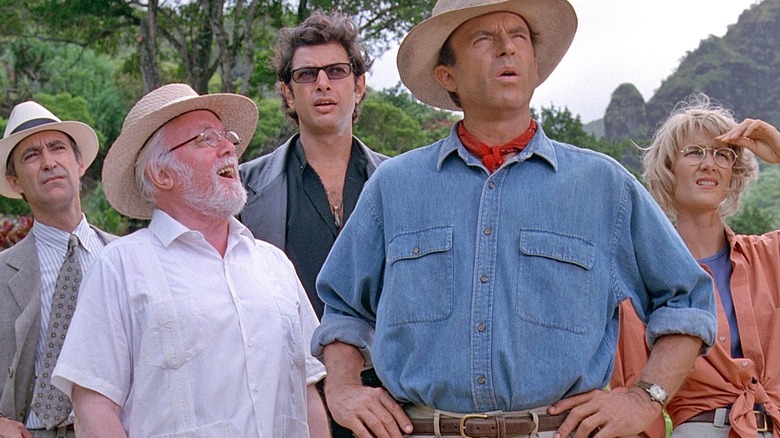The Best And Worst 3D Moments In Sci-Fi Movie History
The development of 3D technology has been both a benefit and a hindrance to the film industry. Like any other piece of technology, 3D is a tool, and when used properly can create an immersive and rewarding cinematic experience for audiences. However, 3D has also become a crutch that some films have leaned on to justify their existence. The use of 3D has a longer history within cinema than some film fans may realize. The first 3D screenings were held in select specialty theaters over 100 years ago. Initially, 3D films began to take off at the box office in the 1950s, thanks to the popularity of 3D comic books and magazines. Many classic adventure, science fiction, fantasy, and horror films used 3D as a major selling point.
James Cameron's science-fiction epic "Avatar" changed the public's perception of 3D, becoming a sensational event unlike anything else in cinematic history. Despite the surge in the popularity of 3D following "Avatar's" success, box office revenue for 3D films has declined over the past decade. Here are some of the best and worst 3D moments in science fiction movie history.
Best: Gil-Man Watches Kay Swim — The Creature From The Black Lagoon (1954)
Long before Universal Pictures attempted to launch the "Dark Universe" crossover franchise, the studio created many influential horror films based on beloved genre characters. "Frankenstein," "The Mummy," "The Bride of Frankenstein," and "Dracula" are just a few of the classics that Universal created during this golden era. The "Universal Monsters" films were events, with shocking visual effects and jump scares frightening audiences. One of the later films in this cycle, "The Creature From The Black Lagoon," used a new technique to draw in fans: 3D.
Produced on a shoestring budget of less than $500,000, "The Creature From The Black Lagoon" was shot in black-and-white 3D using polarized light technology. Unfortunately, the "3D experience" had begun to fade during the middle of the decade, and many audiences did not get the chance to see the film in its intended format. "The Creature From The Black Lagoon" has all the hallmarks of an early 3D film: the story is simple, the titular creature's design is iconic, and the scares are effectively utilized. However, "The Creature From The Black Lagoon" also used 3D to immerse the viewers in a tragic love story. The audience is forced to empathize with the aquatic monster as he falls in love with a human woman, and seeing him swim around in his natural habitat is even more heartbreaking in 3D.
Worst: Jar Jar Fumbles — Star Wars: Episode I — The Phantom Menace (2012 3D Re-Release)
Using 3D to convert older films is a flawed practice. These films weren't originally shot using 3D cameras, which require different considerations. Lucasfilm announced in 2011 that they would be re-releasing the first six "Star Wars" films on the big screen in 3D. This was shortly after the release of "Star Wars: The Complete Saga" on Blu-Ray, which included additional edits and changes to the film. Lucasfilm planned to let audiences experience the journey of Anakin Skywalker in chronological order, so "Star Wars: Episode I — The Phantom Menace" was the first to hit theaters. Unfortunately, the 3D effects only exposed the same flaws the film had back in 1999.
"The Phantom Menace" uses so much computer-generated imagery that the film looks flat and lifeless. Unfortunately, many of these CGI effects (which were groundbreaking in 1999) had aged poorly by 2012. Releasing the film in 3D made it look even more dull and fake. Who wanted to see Jar Jar Binks mope around during the Battle of Naboo in an extra dimension? Audiences were not enthused about the conversion, and the re-release of "The Phantom Menace" only performed moderately at the box office. It was such a letdown that subsequent plans to release "Attack of the Clones" and "Revenge of the Sith" in theaters in fall 2013 were canceled.
Best: Neytri Saves Jake — Avatar (2009)
Movie fans have never had a reason to doubt James Cameron at his word considering the filmmaker has managed to reinvent the film industry almost every time he releases a new flick. In 1997, Cameron set the all-time box office record for the highest-grossing film with his historical romantic epic "Titanic." A technical and emotional marvel, "Titanic" earned 11 Academy Award wins, including best director. Over two decades later, Cameron did it again with 2009's "Avatar," which had the most ambitious use of 3D in sci-fi history at the time. Cameron took full advantage of the immersive technology; creating an entirely new world of the lush jungle planet Pandora. A majority of the film's action sequences and emotional beats rely on the audience's investment in completely digital characters. This could have easily been disastrous if it was improperly handled, at worst feeling like an extended video game cutscene.
However, Cameron used 3D to make the story more engaging, with the extra layer of detail allowing the viewer to learn more about Pandora. It makes it more exciting when Jake Sully (Sam Worthington) chooses to defy his military commanders and fight for the preservation of Pandora. It is impressive that after over a decade, "Avatar" still holds up, and fans are anxious to see what Cameron has in store with the sequel "Avatar: The Way of Water," which is finally headed to theaters later this year.
Worst: Hal Jordan Is Chosen — Green Lantern (2011)
"Green Lantern" is arguably one of the most disappointing comic book films of all time. DC fans had been eagerly anticipating an adaptation of the beloved character, and it seemed like 2011's "Green Lantern" had a perfect team assembled. Ryan Reynolds was perfectly cast as the flying ace Hal Jordan, and fans had reason to believe that "Casino Royale" and "The Mask of Zorro" director Martin Campbell could deliver on the science fiction action spectacle that they hoped for. Unfortunately, "Green Lantern" was a convoluted, misguided mess from the beginning. Reynolds himself has been outspoken about his distaste for the project.
Among the many issues with "Green Lantern" was the decision to convert the film to 3D in the post-production stage. Since "Green Lantern" was not originally conceived with 3D in mind, there are many sequences that look obtuse with the added dimension. The 3D details only called attention to the film's uninspired visual design. There were also many scenes added during reshoots, giving the visual effects team even less time to make the 3D transition feel fluid. One of the biggest issues with "Green Lantern" is that the sequences in space and the scenes on Earth feel like they are taking place in two wildly different movies, both tonally and visually, and the use of 3D only called attention to this glaring problem. The galactic scenes are cartoony and overtly goofy, and the Earthbound moments feel painfully slow and generic.
Best: Entering Dimensions — Doctor Strange (2016)
The Marvel Cinematic Universe has released many films in 3D, and has generally done a good job with its handling of 3D effects. However, there was a sameness of style that had crept into the MCU by the end of Phase Two. Marvel films began to look, sound, and feel the same. While the term "comic book movie fatigue" has been overused, Marvel needed to prove that they could create something that was truly distinct.
"Doctor Strange" was one of the boldest visual achievements in the MCU. It took full advantage of the gags and jump scares that could only work in 3D. Here the 3D made sense within the context of the story, as "Doctor Strange" took the MCU in a more mystical direction than it had ever gone before. Between Steven Strange's (Benedict Cumberbatch) first taste of magic to the head-spinning final battle, there were more than enough reasons to pay the extra price for a 3D ticket.
Worst: Ro-Man Uses Death Ray — Robot Monster (1953)
Did you think that Robby the Robot in 1956's "Forbidden Planet" was the first silly robot in science fiction movie history? "Robot Monster" got their first. The less said about this cheap black-and-white sci-fi action movie, the better. "Robot Monster" was produced on a small budget of $16,000, and the only redeeming thing about it is the relatively brief running time.
"Robot Monster" is one of the worst examples of 3D being used as a gimmick. The "death ray" that the villainous "Ro-Man" (a gorilla body with a diving bell-like helmet) uses is embarrassing, even by the standards of low-budget 1950s sci-fi movies. Ro-Man uses his death ray to attack a group of humans, who are granted special powers. This 3D effect only calls attention to how poor the costume is. "Robot Monster" isn't even enjoyable as an unintentional comedy. Sci-fi B-movies have a special place in the hearts of many genre fans, and at their best can at least deliver some creative visual moments and fun characters. "Robot Monster" is nothing but an uninspired attempt to cash in on the short-lived 3D craze of the 1950s.
Best: Sabotage — Star Trek Beyond (2016)
The "Star Trek" franchise became the phenomenon that it is today because of the care that the creative team put into every production. There's a reason why so many people around the world identify themselves as "Trekkies." An incredible amount of detail is put into the world-building that makes Starfleet feel realistic, and "Star Trek Beyond" showed off the amazing work by the visual effects team and makeup department in the full glory of 3D.
If they were watching the film in 3D, "Star Trek" fans could notice the many different aliens, ships, and props that populated the backgrounds. The awe-inspiring power of 3D to instigate audience applause is put on display during a climactic battle sequence set to the Beastie Boys song "Sabotage," a callback to 2009's "Star Trek" where a younger Kirk listens to the song. Spock (Zachary Quinto) and Bones (Karl Urban) amusingly cite the Beastie Boys record as "classical music." Kirk blasts "Sabotage" on a radio wave that overwhelms the villain Krall (Idris Elba) and his forces when they are attempting to destroy the Federation. The 3D helps show how each of the members of the crew contributed to the mission.
Worst: Sailing Away From Destruction — Independence Day: Resurgence (2016)
Sadly, director Roland Emmerich couldn't capture the same light-hearted tone of his 1996 sensation "Independence Day" with its sequel, as the context of disaster movies had radically changed after 20 years. In the 1990s, it was fun to see national monuments destroyed in epic explosions. In a post-9/11 world, the devastation of the world's population feels like an all-too-real reminder of modern terrorism. Emmerich seemed completely ignorant of how disturbing it would be to watch people run for their lives in 3D.
The film's alien antagonists unleash a massive weapon. They begin to drill down into the Earth's core in the North Atlantic Ocean. The tidal waves and debris affect the entire globe. Amidst chaos and devastation, the comical side character Julius Levinson (Judd Hirsch) tries to sail away from the attack. It's a very strange choice to insert a gag in the middle of such a violent sequence, and the 3D effects make the moment stick out like a sore thumb.
Best: Miles Jumps — Spider-Man: Into the Spider-Verse (2018)
"Spider-Man: Into The Spider-Verse" was an immersive superhero movie experience, unlike anything that audiences had ever seen before. The eye-popping visual style brought the panels of a comic book to life. The film is so packed with Easter Eggs and minor details that even the biggest Spidey fan on the planet could not possibly notice them all after just one viewing. Fans probably needed to see the film in 3D so they could pay attention to what was going on in the background.
However, the 3D in "Spider-Verse" didn't just help highlight the different references, but also made the emotional undercurrent of the story more impactful. "Spider-Man: Into the Spider-Verse" is a story of acceptance in which Miles Morales (Shamaeik Moore) has to accept the responsibility of becoming a web-slinger, even though he is terrified. The film opened up the doors for more representation in comic book cinema, proving that not everyone who dons the Spider-Man mask has to look like Peter Parker. During the climax of the film, Miles jumps off of a tall building and swings across the city for the first time. The 3D allows the audience to process the same excitement, fear, and anticipation that Miles does as he pulls glass off of the side of a building when he jumps; earlier in the film, Peter B. Parker (Jake Johnson) had told him that his hands will "stick" when he is scared.
Worst: Introducing Task Force X — Suicide Squad (2016)
There haven't been many films in recent history that have had quite as troubled a production as 2016's "Suicide Squad." The third installment in the DCEU was initially conceived as a dark, gritty crime thriller. However, the positive reception to a more lighthearted trailer inspired Warner Bros. to do extensive reshoots in order to add more jokes. This resulted in an awkward mishmash of tones. The story was cut down and simplified, which made it very disorienting to watch, and the 3D effects' insertion within what was already chaotic editing made the film unwatchable.
Instead of fully fleshing out the characters of Task Force X, "Suicide Squad" introduces them through a montage. Colonel Rick Flag (Joel Kinnaman) dully lists out the attributes of Deadshot (Will Smith), Harley Quinn (Margot Robbie), Captain Boomerang (Jai Courtney), El Diablo (Jay Hernandez), and Killer Croc (Adewale Akinnuoye-Agbaje). When characters' titles and backstories pop out at the viewer in 3D, it feels like a lazy excuse for actually building empathy for the characters.
Worst: Overdog's Fortress Explodes — Spacehunter: Adventures in the Forbidden Zone (1983)
After the success of "Star Wars," the film industry was desperate to produce another science fiction adventure film that could capture the same tone. This led to the production of many cheap "Star Wars" knock-offs intended to cash in on the sci-fi craze. Among all of the "Star Wars" wannabes, 1983's "Spacehunter: Adventures in the Forbidden Zone" is one of the worst. The production was reportedly rushed in order to take advantage of an uptick in 3D's popularity following the release of 1981 western "Comin' At Ya!"
The lack of passion behind the film is evident from its beat-for-beat replication of the "Star Wars" plot. During the final battle, Wolff (Peter Strauss), Niki (Molly Ringwald), and Washington (Ernie Hudson) flee the fortress of the villain Overdog McNabb (Michael Ironside) before it explodes. The detonation is virtually identical to the implosion of the "Death Star." The 3D made the obvious disparity in quality even more apparent.
Best: Activating The Crystal — Metalstorm: The Destruction of Jared-Syn (1983)
Not every "Star Wars" 3D knockoff is worth dismissing entirely. While it can't compare to the original trilogy, 1983's "Metalstorm: The Destruction of Jared-Syn" is an amusingly ridiculous combination of fantasy, science fiction, action, and western genres. It draws inspiration from the outer space action of "Star Wars" and the mythology of "Raiders of the Lost Ark." Look, if you're going to rip off "Star Wars," you might as well rip off another Lucasfilm production at the same time. If you're going to steal, at least steal from the best, and do it in 3D while you are at it!
Michael Preston's over-the-top performance as the villainous space outlaw Jared-Syn has to be witnessed to be believed. Preston chews the scenery with his eccentric cruelty, showing the actor completely understood the assignment. Syn possesses powerful magic crystals that drain the life out of his victims. In one of the most amusingly silly moments, Syn desperately tries to unleash the crystal's power during the final battle with the heroic space ranger Dogen (Jeffrey Byron). The recreation of the Ark of the Covenant moment in "Raiders of the Lost Ark" at least has fun with the way the magical crystal glows in 3D.
Worst: Dinobots Revealed — Transformers: Age of Extinction (2014)
If there's any filmmaker who should stay far away from 3D, it's Michael Bay. His "Transformers" films are among the most cynical blockbusters of the 21st century, and 2014's "Transformers: Age of Extinction" brought the franchise to a new low. The use of 3D only called attention to the laziness of the production. There are unfinished visual effects, glaring continuity errors, and no sense of story structure. Unlike 2011's "Transformers: Dark of the Moon," which actually had some fun with the 3D destruction of Chicago, "Age of Extinction" is just depressing to watch.
The much-hyped reveal of the "Dinobots" was one of the most disappointing moments in "Age of Extinction." Optimus Prime (Peter Cullen) delivers yet another inspirational speech when he leads the Dinobots into battle against Megatron and the Decepticons. While Bay tries to use 3D to make this moment feel exciting, it falls completely flat.
Best: Alan Grant Sees Dinosaurs — Jurassic Park (2013 3D Re-Release)
Sometimes 3D can call attention to films that have aged poorly like "The Phantom Menace," but it can also highlight why some classics have held up. In 2013, Universal Pictures re-released Steven Spielberg's original "Jurassic Park" to celebrate the film's 20th anniversary. Fortunately, the Steven Spielberg classic is one of the rare blockbuster films that hasn't aged a day since its initial release.
One of the most glaring errors with the "Jurassic Park" sequels is that they don't capture the same sense of awe and wonder that the first film does. There is a simple beauty in seeing dinosaurs on the big screen for the first time, and the moment where Alan Grant (Sam Neill) observes a Brachiosaurus in its natural habitat was jaw-dropping in 1993 because of how groundbreaking the CGI was. Audiences got to feel the same way when they saw the scene in 3D.
